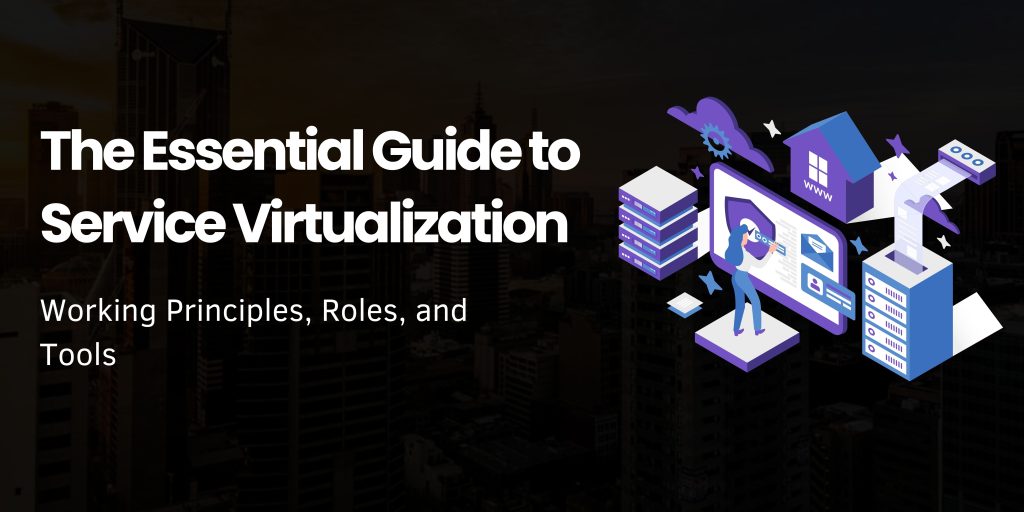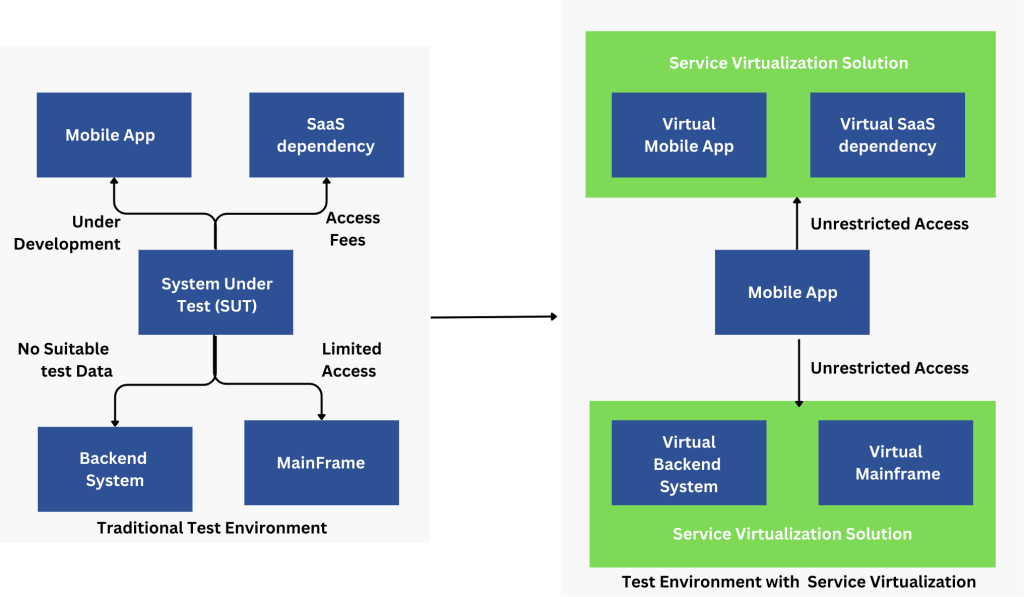
How Service Virtualization Works
Service virtualization involves creating a simulated version of a service that mimics its behavior for testing and development purposes. This simulation allows teams to test their applications without needing access to the actual services, which may be incomplete, unavailable, or costly to use in a development environment.
The process typically involves the following steps:
- Modeling the Service: Defining the service’s behavior, data, and performance characteristics to be virtualized. This can include APIs, databases, and other dependencies.
- Capturing Interactions: Recording real interactions with the service to understand its behavior under different conditions.
- Simulating Responses: Creating a virtual service that generates appropriate responses based on predefined rules or recorded interactions.
- Deploying the Virtual Service: Integrating the virtual service into the development and testing environment, allowing it to replace the actual service.
This approach enables continuous testing and integration, as the virtual service can be modified and deployed quickly to match the evolving requirements of the application.
The Role of Service Virtualization
Service virtualization plays a crucial role in the software development lifecycle, particularly in agile and DevOps environments. Here’s why:
- Early Testing: Developers can test individual components and integrations early in the development cycle, even if the dependent services are not yet available.
- Cost Efficiency: Reduces the need for expensive third-party services or systems for testing purposes.
- Improved Quality: Enables comprehensive testing scenarios, including edge cases and failure conditions, leading to more robust applications.
- Faster Development: Eliminates bottlenecks caused by unavailable services, allowing parallel development and testing activities.
- Risk Mitigation: Helps identify and resolve issues early, reducing the risk of defects in production.
Service Virtualization Tools & What They Do
SV tools can replicate nonfunctional aspects of the system, like connections and poor response times, in addition to mimicking the actual behavior of the system’s constituent pieces.
Complex request matches can be incorporated by SV tools, enabling the test to offer distinct answers for different kinds of requests. Certain virtual services forward all other requests to an operational backend system after providing a set of stubbed responses for the request criteria provided by testers. Others mimic how the system might act when the SV builds some of the response’s components using information and attributes from the request.
Here are more helpful features:
- SV creates a digital twin of your test environment to be used as a virtual endpoint for internal testing or as a sandbox for partner development.
- As an alternative to creating the interactive pattern from scratch, developers collect traffic by using an SV platform to produce virtual objects.
- Numerous protocols, including HTTP, MQ, TCP, and many more, are supported by SV.
- SV tools frequently have user interfaces that make it possible for non-developers to utilize the tools without being familiar with the specifics of the project.
NetOcean- Cavisson Service Virtualization Tool:-
Cavisson Systems, a leader in performance engineering and monitoring solutions, has made significant strides in service virtualization with its NetOcean Service Virtualization tool. NetOcean stands out by offering a highly scalable and easy-to-use platform that supports a wide range of protocols and data formats. Here’s how Cavisson Systems’ NetOcean tool enhances service virtualization:
- Scalability: NetOcean can handle high volumes of virtualized services, making it ideal for large-scale enterprise applications.
- Ease of Use: User-friendly interfaces and intuitive setup processes allow teams to create and deploy virtual services quickly.
- Integration: Seamlessly integrates with other Cavisson performance engineering tools, providing a holistic approach to application performance and testing.
- Realistic Simulations: Advanced simulation capabilities ensure that virtual services accurately mimic real-world conditions, enhancing the reliability of testing outcomes.
- Comprehensive Support: Supports a wide range of protocols and data formats, ensuring compatibility with diverse application environments.
Recognition
Due to our unwavering focus on innovation and the consistently positive feedback from our customers, we are proud to announce that we have been featured in several prominent industry reports on service virtualization. Our dedication to providing cutting-edge solutions and exceptional customer service has earned us recognition in the HTF MI Service Virtualization Study Report 2023-2029, the Global Service Virtualization Research Report by The Market Reports, and the Service Virtualization Market Report by Report Ocean.
Read the reports:
Conclusion
In conclusion, service virtualization is a vital component of modern software development, enabling early and comprehensive testing, cost efficiency, and faster development cycles. Tools like NetOcean from Cavisson Systems provide robust solutions for implementing service virtualization, helping organizations deliver high-quality software with greater efficiency and confidence.
Contact us to begin your service virtualization journey with us!

